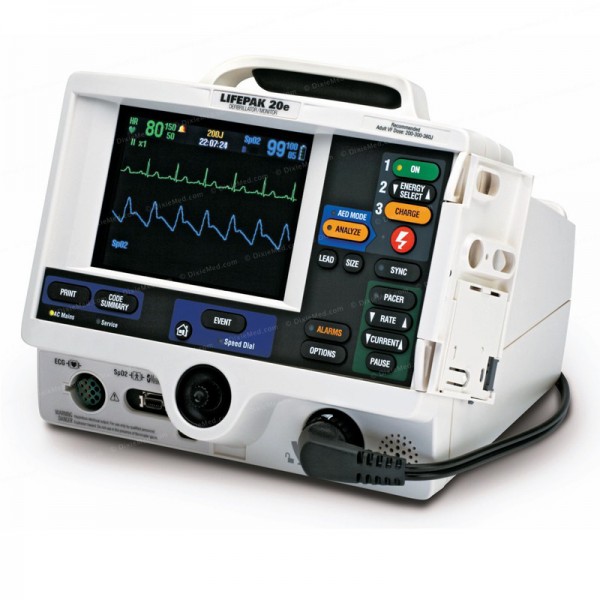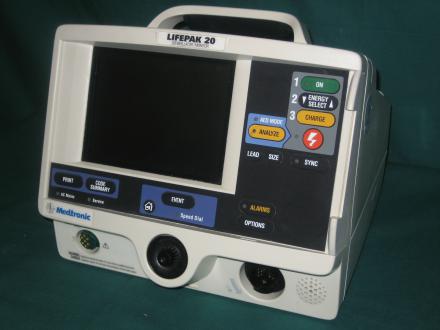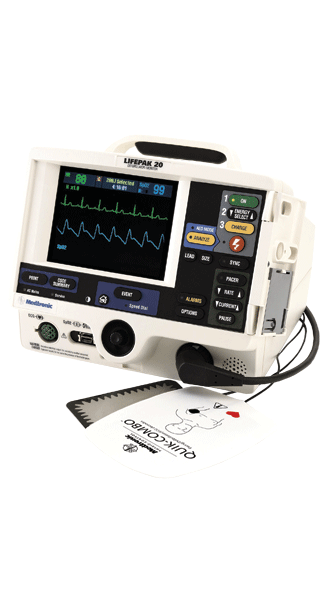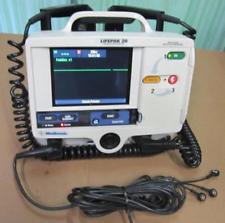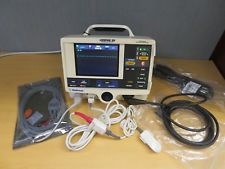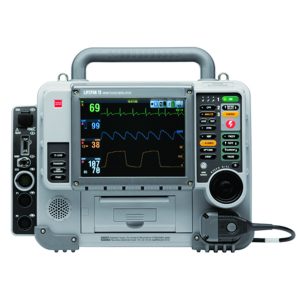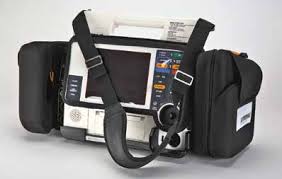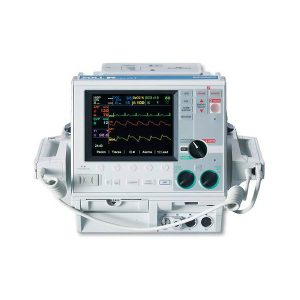Description
Physio Control Lifepak 20 Features
The Physio Control Lifepak 20 AED provides quick and effective use. The Lifepak 20 easily converts to manual mode and is compact and lightweight for easy carrying. This AED is easy to maintain and service and is versatile to use. This Lifepak comes with SpO2 and pacing as options.
Modes
Manual Mode provides a normal operating capability for ALS users. Manual mode allows energy selections up to 360J, offers synchronous cardioversion, and pacing. The ECG waveform is displayed on the 4.53-inch display.
AED Mode provides a normal operating capability for BLS users. All user features are available except manual defibrillation, synchronous cardioversion, pacing, and access to archived patient records. This mode provides shock energy defaults up to 360J. Users have the option to display ECG waveforms and/or visual AED prompts on the display.
Setup Mode allows the operator to configure the device settings.
Service Mode allows the operator to execute diagnostic tests and calibration, display device mode software and hardware versions, and display and print the diagnostic code log.
In-service Mode simulated waveforms are available for demonstration purposes. The waveforms consist of short segments of realist data, which are repeated to form a continuous waveform.
Archive Mode provides the operator the opportunity to access records of previous patients for review, transmission, printing, editing or deletion.
Auto Test Mode performs daily self-tests.
Physio Control Lifepak 20 Specifications
Power
- The device is an AC line operated device with an internal battery as back up.
- AC Power: 90-132 VAC 50/60 Hz, 198-264 VAC 50/60 Hz
- total power draw less than 75 Watts
- Internal battery back up: NiMh, batteries charge while device operates from AC power
- Operating time: a new fully charged internal backup battery will provide the following prior to shutdown: 120 minutes of monitoring, 135 minutes of monitoring without pulse oximeter, 90 360 joules discharges, and 70 minutes of monitoring plus pacing
- Typical battery charge time: <2 hours when the device is powered off and AC power is applied
- Low battery indication and message: when the device is unplugged from AC power, it switches to battery. When the battery gets low, the battery detection icon is indicated with low battery message in the status area, and warning tone occurs
Dimensions
- Height: 8.4″ (21.3 cm)
- Width: 10.3″ (26.2 cm)
- Depth: 10.3″ 26.2 cm)
- Weight: fully featured defibrillator/monitor (pacing and SpO2) 5.58 kg (12.3 lbs)
Display
- Height: 3.4″ (8.63 cm)
- Width: 4.53″ (11.5 cm)
- Resolution: 230 x 240 dot color active LCD
- Display Time: a minimum of 4 seconds of ECG and alphanumeric for values, device instructions or prompts. Option to display one additional waveform.
- Sweep Speed: 25 mm/sec for ECG.
Data Management
The device can easily print a CODE SUMMARY report, including an introduction to the patient information and critical event record. The summary report also includes event and vital signs log, and waveform associated with certain events.
Communications
The device can print archived patient records and has two data communications port, which supports a serial data cable.
Monitor
- ECG: can be monitored through 3-wire or 5-wire ECG cables. Standard paddles or therapy electrodes are used for paddles lead monitoring
- Lead selections: Leads I, II and III with a 3-wire ECG cable, leads I, II, III, AVR, AVL, and AVF, V acquired simultaneously with a 5-wire ECG cable.
- ECG size: 4, 3, 2.5, 2, 1.5, 1, 0.5, 0.25 cm/mV
- Heart rate display: 20-350 bpm digital display
- Voice prompts: used for selected warnings and alarms, configured on/off
- SpO2: saturation range: 1 to 100%
- Saturation accuracy: (70-100%) (0-69% unspecified): Adults/ Pediatric: ±2 digits with no motion, ±3 digits with motion. Neonates: ±3 digits with or without motion
- SpO2 update averaging rate: user selectable 4, 8, 12 or 16 seconds
- SpO2 measurements: functional SpO2 values are displayed and stored
- Pulse rate range: 25 to 240 pulses per minute
- Pulse rate accuracy: ±3 digits without motion and ±5 digits with motion


